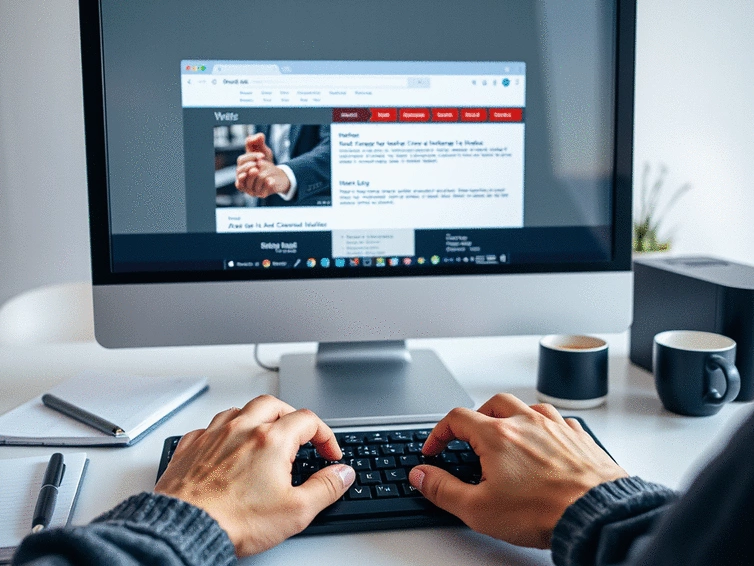
Enhancing SEO with Internal Links
Ever felt lost trying to navigate a website? Statistics show that 38% of users will stop engaging with a website if the content is unattractive. This is where effective internal linking comes into play—it's not just about SEO; it's about creating an inviting user experience that keeps visitors coming back for more.
What You Will Learn
- Internal linking significantly improves navigation by guiding users through your site's content.
- Effective internal links boost your SEO ranking by helping search engines understand the relevance of your pages.
- By encouraging users to explore related content, internal linking enhances engagement and reduces bounce rates.
- Understanding page authority and domain authority is vital for maximizing the effectiveness of your internal linking strategy.
- Descriptive anchor text and logical structuring of links are essential practices for effective internal linking.
The Dual Impact of Internal Linking: SEO & User Experience
Internal links are vital for both guiding users and boosting search engine visibility. This visual highlights the interconnected benefits.
🚀 SEO Benefits
- ✔ Distributes Page Authority
- ✔ Improves Indexing & Crawling
- ✔ Enhances Keyword Relevance
🧑💻 User Experience
- ★ Improves Navigation
- ★ Increases Time on Site
- ★ Reduces Bounce Rate
Understanding Internal Linking: The Key to SEO and User Experience
When it comes to building an effective online presence, understanding internal linking is essential. You might be wondering, "What exactly is internal linking?" Simply put, internal links are hyperlinks that connect different pages within the same website. These links are crucial not only for navigation but also for improving SEO and enhancing user experience. They help search engines understand the structure of your site and how pages relate to each other, which can significantly affect your rankings!
Think of internal linking like a roadmap for your visitors. By guiding them to related content, you're not only making it easier for them to find what they're looking for, but you're also keeping them engaged on your site longer. This is vital for both user experience and SEO, as search engines favor sites that keep users happy and engaged.
What is Internal Linking and Why is it Essential?
Internal linking plays a vital role in your website's structure. It allows users to navigate seamlessly from one piece of content to another, creating a more pleasant browsing experience. Additionally, internal links can spread link equity across your site, helping lesser-known pages gain visibility. As explained by Moz's guide on internal links, these connections are fundamental for proper site architecture. Here are some key reasons why internal linking is essential:
- Improves Navigation: Internal links make it easier for users to explore your site.
- Boosts SEO: Search engines use these links to determine the relevance and authority of your pages.
- Encourages Engagement: By directing users to related content, you can keep them on your site longer.
As the owner of All for Domains, I've seen firsthand how effective internal linking can transform a website's performance. When I started my journey, I focused on creating a clear and logical structure that not only benefited my visitors but also helped search engines index my content more effectively.
The Relationship Between Internal Linking, SEO, and User Experience
So, how do internal links intertwine with SEO and user experience? They create a symbiotic relationship that enhances both aspects. From an SEO perspective, internal links help distribute page authority across your site. This means that if you have a well-linked page with high authority, it can pass some of that authority to linked pages, improving their chances of ranking higher in search results.
On the user experience side, internal linking encourages users to explore more of your content. For instance, if a visitor lands on a blog post about domain registration, they might find a link to a guide on web hosting. This not only enhances their experience but also helps them see your brand as a valuable resource. A well-structured internal linking strategy can entice users to spend more time on your site, which search engines interpret as a positive signal.
The Role of Page Authority and Domain Authority in Internal Linking
Understanding page authority and domain authority is crucial when crafting your internal linking strategy. Page authority refers to the likelihood of a specific page ranking high in search results, while domain authority indicates the overall strength of your entire website. When you link to high authority pages, you can effectively enhance the visibility of lower authority pages.
- Link to High Authority Pages: Direct users to your most authoritative content to boost lesser-known pages.
- Maintain Logical Structure: Ensure that your internal links make sense contextually.
- Regularly Update Links: As new content is added, revisit your previous articles to include links to fresh pages.
By keeping these factors in mind and continually refining your internal linking strategy, you can significantly improve both SEO and user experience on your site. Remember, a well-structured website not only helps your audience but also sets the stage for your digital success!
Pro Tip
To maximize the effectiveness of your internal linking strategy, consider using descriptive anchor text. This not only helps search engines understand the context of the links but also provides users with a clear indication of what to expect when they click. For example, instead of using "click here," opt for phrases like "learn more about SEO best practices." This small change can significantly enhance both user engagement and SEO performance!
Summarizing the Importance of Internal Linking for SEO and User Experience
As we wrap up this discussion on internal linking, it’s clear that these connections are not just a technical SEO tactic but also a crucial element of user experience. By implementing effective internal linking strategies, you can guide visitors through your site and enhance their journey. This is about more than just SEO; it’s about creating a seamless user experience that keeps people engaged!
To summarize, internal linking helps improve navigation, distribute page authority, and enhance overall site structure. Here are some key takeaways to keep in mind:
- Enhances Navigation: Well-placed internal links allow users to easily find related content.
- Boosts SEO: Helps search engines understand the structure and value of your content.
- Improves User Engagement: Keeps visitors on your site longer, reducing bounce rates.
- Establishes Authority: Strengthens your brand's credibility with a well-organized site.
Emphasizing these points can help you craft a powerful internal linking strategy that benefits both SEO and user experience.
Key Takeaways on Internal Linking Best Practices
When you think about internal linking, remember to focus on a few best practices that can take your strategy to the next level. As Semrush highlights in their guide to internal links, a well-thought-out strategy is key. Here’s a quick checklist:
- Use Descriptive Anchor Text: Make sure your anchor text is relevant and descriptive for better context.
- Link To Relevant Content: Keep the links pertinent; this will enhance user engagement.
- Keep Track of Your Links: Regular audits can ensure all links are functional and beneficial.
- Consider User Intent: Think about what your users are looking for when creating links.
By following these guidelines, you can create a well-structured internal linking framework that is both user-friendly and optimized for search engines.
FAQs About Internal Linking
Here are some frequently asked questions about internal linking to help clarify its importance and implementation:
- Q: What is internal linking?
- A: Internal linking refers to hyperlinks that connect different pages within the same website. They help users and search engines navigate your site.
- Q: Why is internal linking essential for SEO?
- A: Internal links help distribute page authority, improve indexing and crawling by search engines, and enhance keyword relevance, all of which contribute to better search engine rankings.
- Q: How does internal linking improve user experience?
- A: Internal links guide users to related content, making navigation easier, increasing their time on site, and reducing bounce rates, ultimately leading to a more engaging experience.
- Q: What are page authority and domain authority, and how do they relate to internal linking?
- A: Page authority refers to a specific page's ranking potential, while domain authority is the overall strength of your website. Linking from high-authority pages to lower-authority pages can boost the visibility and ranking potential of the latter.
- Q: What are some best practices for internal linking?
- A: Key best practices include using descriptive anchor text, linking to relevant content, regularly auditing and updating your links, and considering user intent when structuring your links.
Final Thoughts on Enhancing SEO and User Engagement through Internal Links
In conclusion, investing time and effort into your internal linking strategy can yield significant benefits. At All for Domains, we believe that a comprehensive approach to internal linking not only improves your site's performance but also enhances the overall user experience. It’s a win-win situation!
So, as you move forward, remember that internal links are more than simple navigation tools; they are vital components of your website’s architecture. By employing the strategies discussed, you’ll be on your way to creating a more engaging and SEO-friendly site!
Encouraging Action: Implementing a Robust Internal Linking Strategy
Steps to Begin Your Internal Linking Journey Today
Ready to get started with internal linking? Here’s a simple step-by-step process to guide you:
- Audit Your Existing Content: Take inventory of your current pages to identify opportunities.
- Map Out Your Content Structure: Create a visual representation of how your content connects.
- Identify Key Pages: Focus on linking to your most important or high-traffic pages.
- Add Internal Links: Integrate links within your content where relevant.
- Monitor Performance: Use analytics to track how your internal links are performing.
Taking these steps will help you create a solid foundation for your internal linking strategy!
Inviting Readers to Share Their Internal Linking Experiences
I’d love to hear from you! What strategies have you found most effective for internal linking? Share your experiences in the comments. Let’s learn from each other’s successes and challenges in optimizing our sites for both SEO and user engagement. Your insights could inspire others on their journey!
Recap of Key Points
Here is a quick recap of the important points discussed in the article:
- Enhances Navigation: Well-placed internal links allow users to easily find related content.
- Boosts SEO: Helps search engines understand the structure and value of your content.
- Improves User Engagement: Keeps visitors on your site longer, reducing bounce rates.
- Establishes Authority: Strengthens your brand's credibility with a well-organized site.
- Use Descriptive Anchor Text: Ensure anchor text is relevant and descriptive for better context.
- Link To Relevant Content: Keep links pertinent to enhance user engagement.
- Regularly Update Links: Revisit previous articles to include links to new content.

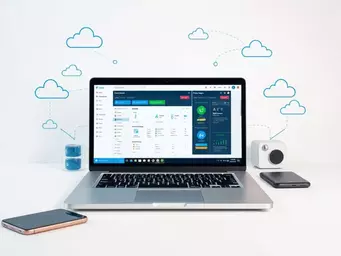
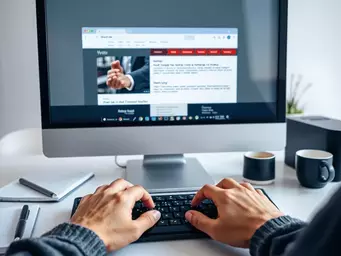
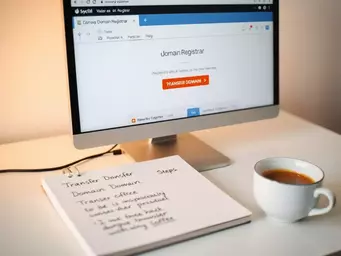
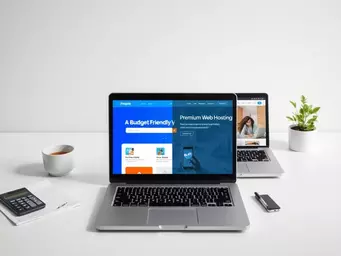
Understanding Cloud Hosting Basics
Enhancing SEO with Internal Links
Transfer Your Domain Name Simply
Cheap vs. Premium Web Hosting
Intro to DNS Records for Beginners